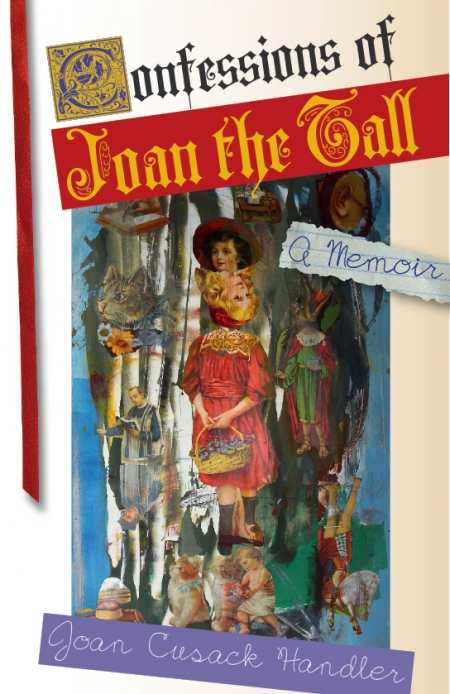Confessions of Joan the Tall
“How noble and good everyone could be if, every evening before falling asleep, they were to recall to their minds the events of the whole day…” wrote Anne Frank, the quintessential young diarist.
Confessions of Joan the Tall, a coming-of-age memoir, chronicles one year in the life of Joan Cusack, a working-class twelve-year-old from the Bronx who wrestles with her height (six feet), her religious convictions (Catholic), her family and classmates, and her adolescent angst (about pretty much everything). Carlos Andrade’s cover illustration—a disjointed collage—beautifully depicts the jumbled sense of self revealed through Joan’s teenage journal.
Award-winning author Joan Cusack Handler has published two books of poetry and edited two anthologies. Her talents as both writer and clinical psychologist come to the fore in Confessions of Joan the Tall, whose protagonist comes to understand Anne Frank’s conclusion that “paper has more patience than people.”
Joan writes her diary in stream-of-consciousness fashion, eschewing conventional punctuation and capitalizing words that loom large in her teenage mind. “I learn by watching people’s faces too. Their mouths tell me right away if they’re laughing cause they think I’m a Giant or cause they like me and not even noticing how Tall my stupid body is. Or I can see a mouth and know it’s mad even if it’s not yelling and the lips are a scar like Mom’s when she’s mad the worst way. Or Dad’s when he’s thinking you should be Ashamed of yourself for hurting Jesus who Suffered and Died for Your Sins.”
Joan has the authentic voice of a young teen from a 1950s blue-collar, Irish-Catholic family. She is an adolescent struggling to find herself. In the process, she must come to terms with moral dilemmas posed by the juxtaposition of her religion and the demands of the outside world. Is it a mortal sin or a venial sin to hate the brother who bullies her? Are public school kids doomed to Hell because they aren’t part of the One True Religion? Is it sinful to be proud of “looking like a Model” in her new swimsuit?
Like most adolescents, Joan is complex: at times immature and egocentric, and at other times mature beyond her years. “And you can feel extra close to Jesus [at the Monastery] cause the altar’s so close. And no huge ceilings and windows and statues and no zillions of pews and people too that make you feel like you’re really far away from Jesus and very very small so how can Jesus if He wasn’t God and so perfect and great at performing miracles even see you in a million faces in the middle of Church on Sunday morning?”
The beauty of Handler’s memoir is that it will appeal to young people and adults alike, particularly those who, like Joan, have grappled with their spiritual upbringing and what it means for the day-to-day conduct of their lives. Confessions of Joan the Tall is destined to join Betty Smith’s A Tree Grows in Brooklyn and Doris Kearns Goodwin’s Wait Till Next Year, coming-of-age tales that speak to the soul.
Reviewed by
Nancy Walker
Disclosure: This article is not an endorsement, but a review. The publisher of this book provided free copies of the book and paid a small fee to have their book reviewed by a professional reviewer. Foreword Reviews and Clarion Reviews make no guarantee that the publisher will receive a positive review. Foreword Magazine, Inc. is disclosing this in accordance with the Federal Trade Commission’s 16 CFR, Part 255.

